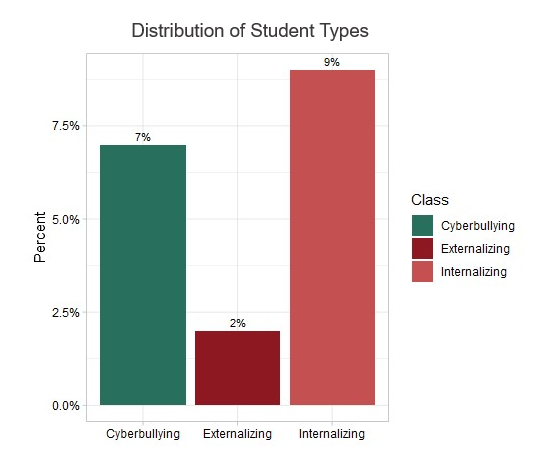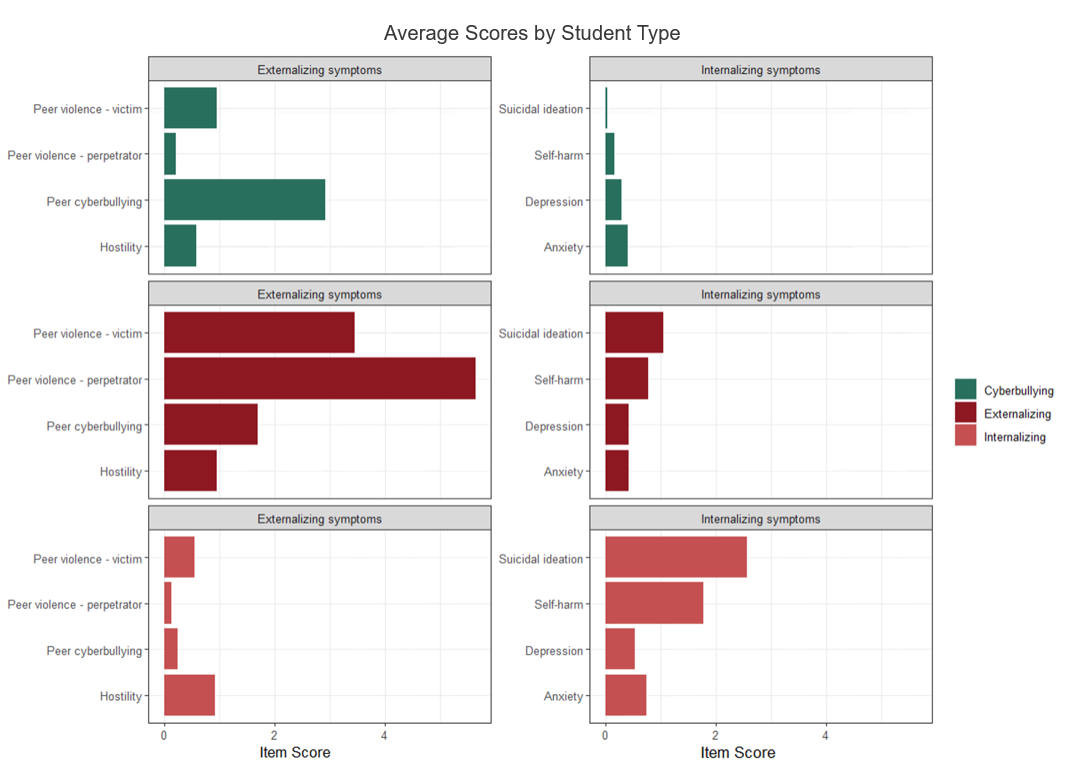Mental health and well-being are ongoing struggles for students as they navigate the pressures of academics, and life in general. This study looks at students in a school district in Texas during the 2021-2022 school year and uses quantitative methods to find groups of students facing similar social and emotional difficulties.
Our team recently investigated a social and emotional learning (SEL) program implemented in a Texas school district for 9th grade students during the 2021-22 school year. As part of this investigation, we surveyed the students twice – once in the fall and again in the spring – to better understand the program and its effect on students’ mental health and well-being.
Using statistical modeling, we identified five distinct groups of students, each characterized by specific strengths and challenges. We found two large groups – around 80% of those surveyed – who were doing relatively well and reported few difficulties. The remaining students were classified into one of three classes, characterized by specific social and emotional challenges. Seven percent of students fall into the “cyberbullying” class. These students have an elevated risk of involvement in peer violence and cyberbullying. Another group, the “externalizing” class (2%), reports significant feelings of hostility and is highly likely to be both a victim and perpetrator of peer violence. Finally, the “internalizing” group characterizes students with higher levels of depression, anxiety, self-harm, and suicidal ideation.

The distribution of the three classes is shown. The percentages describe the proportion of the entire group of students who participated in the survey.
In the figure below, we show the average characteristics of the students in each of these three groups, in all of the areas we studied. On the left side are the “externalizing” symptoms. These are social and emotional symptoms that are directed outwardly, toward others. The other column shows the “internalizing” symptoms, like depression and anxiety. As you can see, the patterns of symptoms vary widely across these three groups. The cyberbullying class, in dark green, has the highest risk of peer cyberbullying. The externalizing class, in dark red, has a higher risk of being both a victim and perpetrator of peer violence. And the internalizing class, in orange, has higher levels of self-harm, suicidal ideation, depression, and anxiety.

The graphic above shows each group’s average scores on the measured survey items.
Where does this leave us? The good news is, most of the students we surveyed reported that they were doing well and were managing the social and emotional challenges of adolescence during this time period. This is particularly encouraging given the fact that our study took place during the COVID-19 pandemic. However, it’s critical to acknowledge the 20% of students reported facing some sort of difficulties. We sought to identify groups of students with similar challenges in this study. There is a great deal of current attention to and concern about youth mental health. When we better understand characteristics and challenges students are facing today, future interventions can provide them with tailored training and support to improve their resilience and emotional and social well-being and reduce the risk of violence and other adverse outcomes
Project Contact
Explore the Project
Suggested Citation
Lancaster, C. (2023, September 15). A Snapshot of Students’ Social and Emotional Well-Being. [Web blog post]. Goal: Resilience. Retrieved from https://goalresilience.norc.org.
External Links
CDC’s Adolescent and School Health
CDC’s Back-to-School 2023: Healthy Youth, Successful Futures
Funding Sources
Centers for Disease Control and Prevention